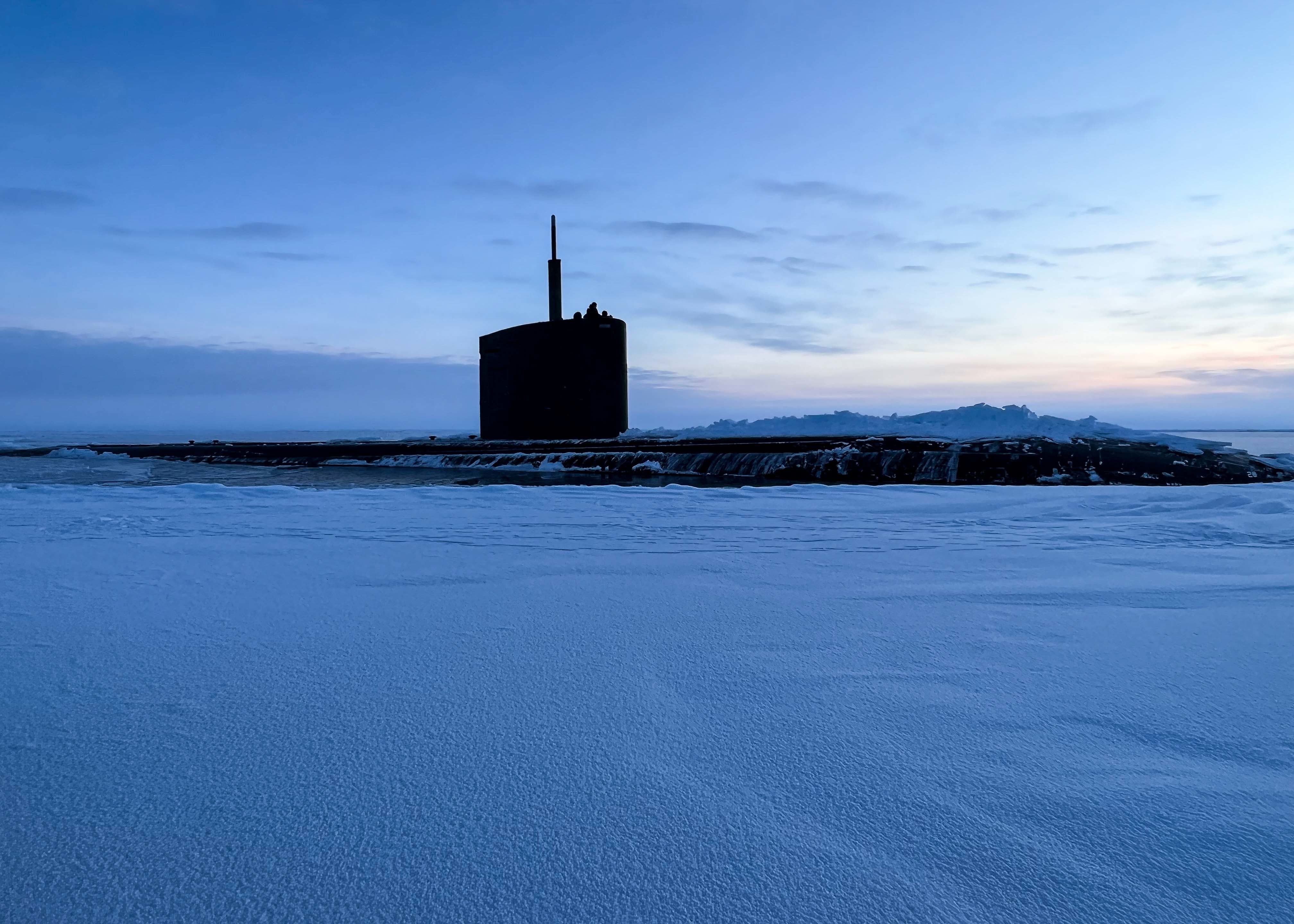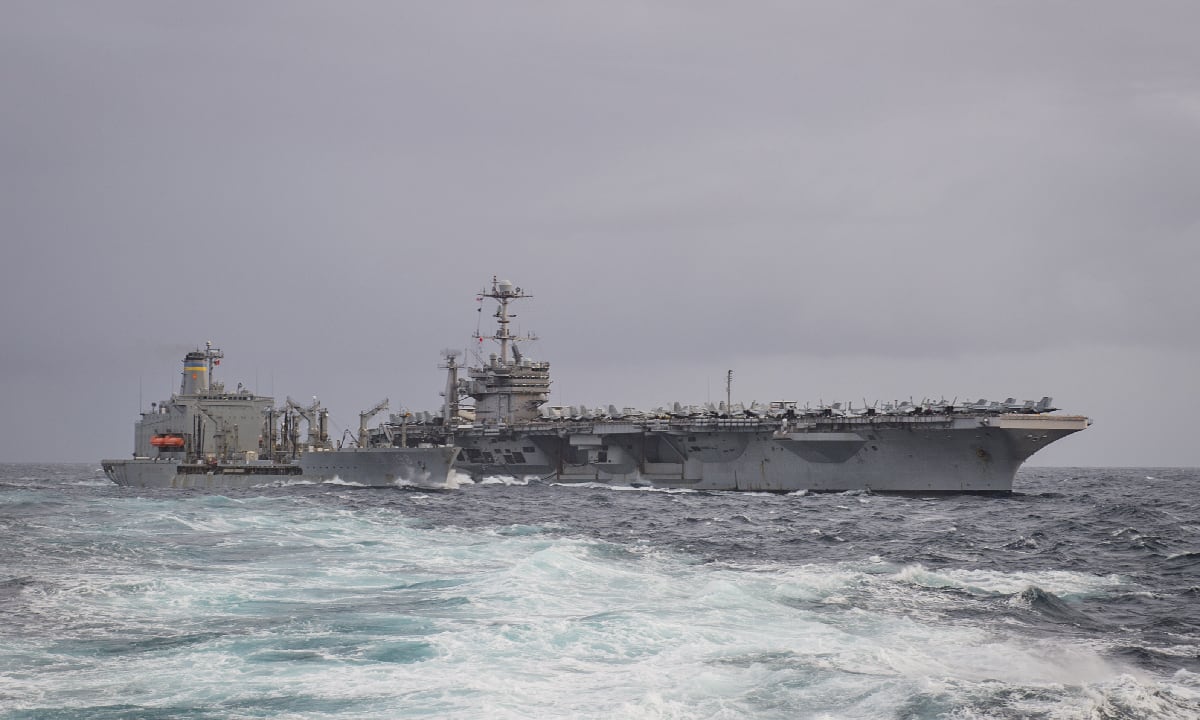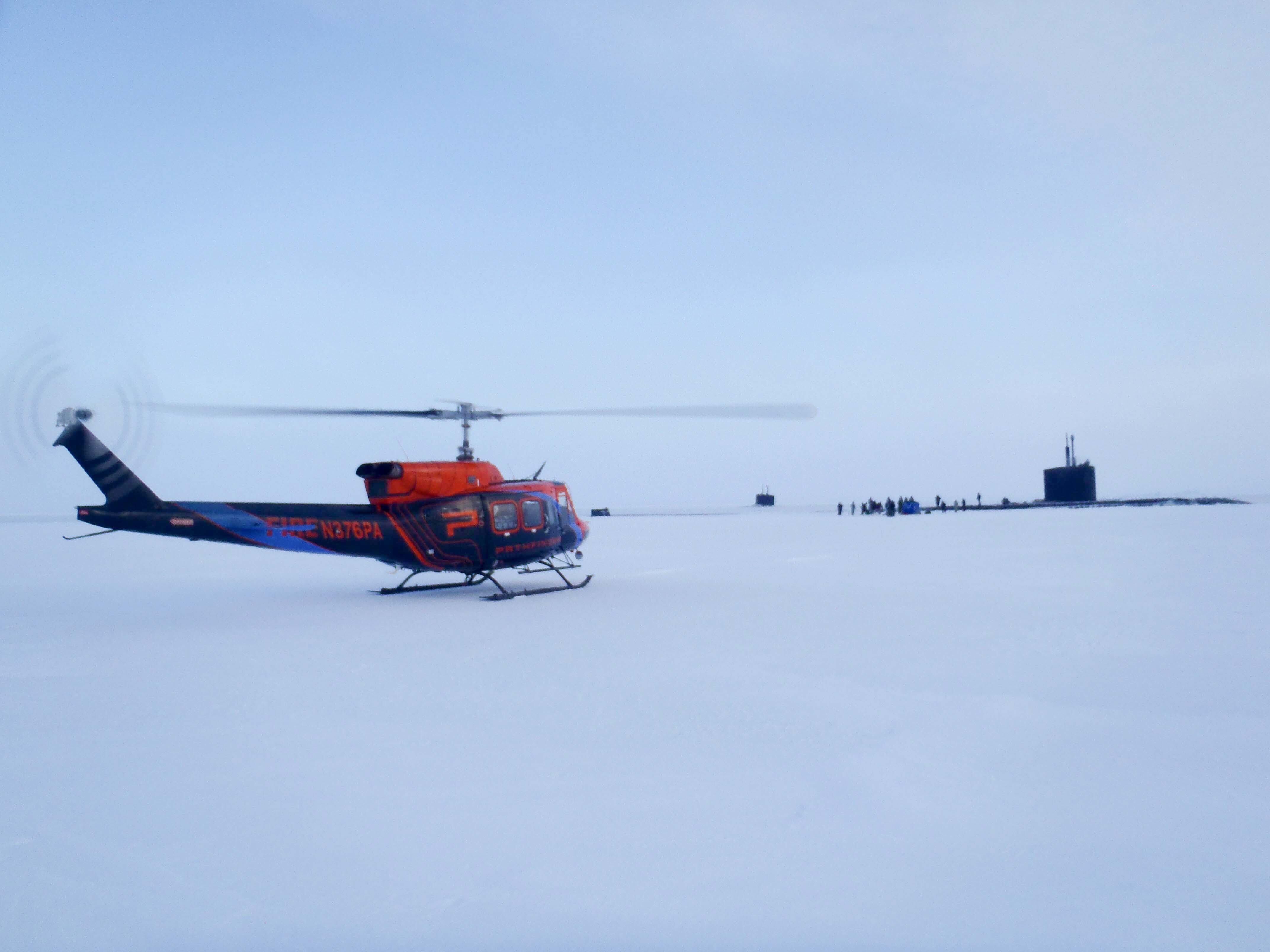The Navy has transformed a slab of Arctic ice into an airstrip that can support multiple daily flights, and a Navy encampment.
The 2,500 ft. long runway and the encampment, which includes a command center, sleeping quarters, cafeteria, restrooms and internet, were set up as part of Ice Exercise 2022, or ICEX 2022, on a three-and-a-half-mile long sheet of ice.
The encampment, dubbed Ice Camp Queenfish after the first submarine to operate under ice, is the biennial exercise’s forward operating base and can house up to 60 personnel. It is being used to test out “submarine systems and other arctic research initiatives,” the Navy said in a news release.

Construction kicked off on Feb. 28, and wrapped up on March, 3. The exercise launched on March 4, and lasts three weeks.
“Although the ice camp and air strip are built in just a few days, it takes a tremendous amount of practice, planning and hard work by many highly trained people ahead of time to be successful,” Rear Adm. Richard Seif, commander of the Navy’s Undersea Warfighting Development Center in Groton, Connecticut and ranking officer at ICEX 2022, said in a Navy news release.
RELATED

The Navy utilized “multi-year ice” to set up the camp — or ice that has undergone at least one melt season and is roughly 2-4 meters thick — while the runway was established on “first-year ice,” which is up to 2 meters thick, according to the National Snow and Ice Data Center.
“The multi-year ice is thicker and it ensures that the floe is stable enough to support the camp for the duration of the exercise, whereas that first-year ice is easier to groom for a runway — it’s smoother and not as pocketed,” Lt. Colleen Wilmington from the U.S. National Ice Center said in a Navy news release.
U.S. Marine Corps Capt. Dave Swensen, who is heading a team of six from the Marine Corps Mountain Warfare Center, said that the exercise will allow them gain experience operating in the dramatic temperatures.

“Any opportunities we can get to provide our personnel access to experience in extreme cold conditions will be force multipliers to our institution and ultimately to the Marine Corps,” said Swensen said in a Navy news release. “We will come back among the most cold weather-experienced personnel at the base.”
This year marks the Navy’s 98th iteration of an ice exercise. The Navy’s Arctic Submarine Laboratory spearheaded the exercise’s planning and execution, and includes personnel from the U.S. Navy, Army, Air Force, Marine Corps and Coast Guard.
Personnel from the Royal Canadian Air Force, Royal Canadian Navy and United Kingdom Royal Navy are also participating.
“The Arctic region can be unforgiving and challenging like no other place on Earth,” Seif said in a news release. “It’s also changing and becoming more active with maritime activity. ICEX 2022 provides the Navy an opportunity to increase capability and readiness in this unique environment, and to continue establishing best practices we can share with partners and allies who share the U.S.’s goal of a free and peaceful Arctic.”





